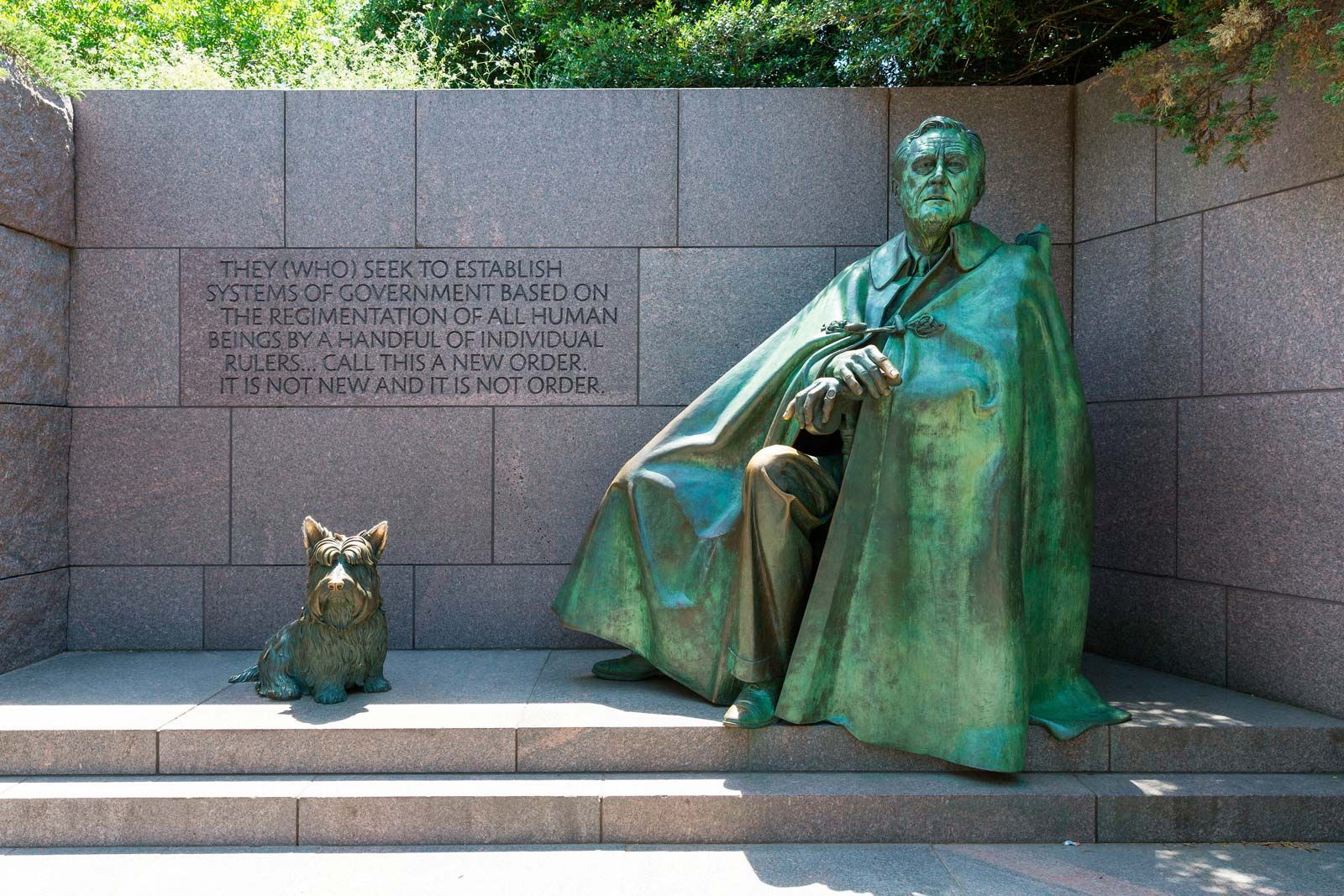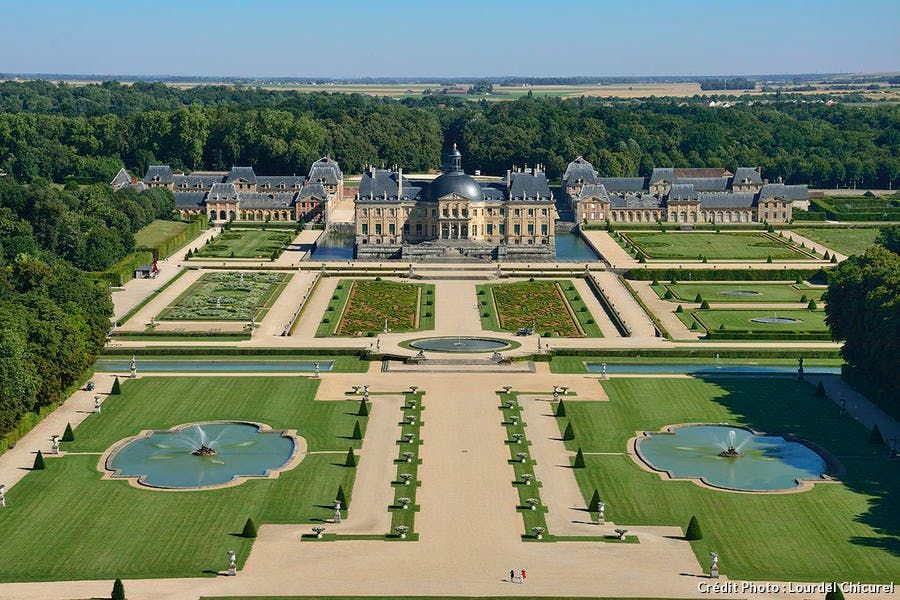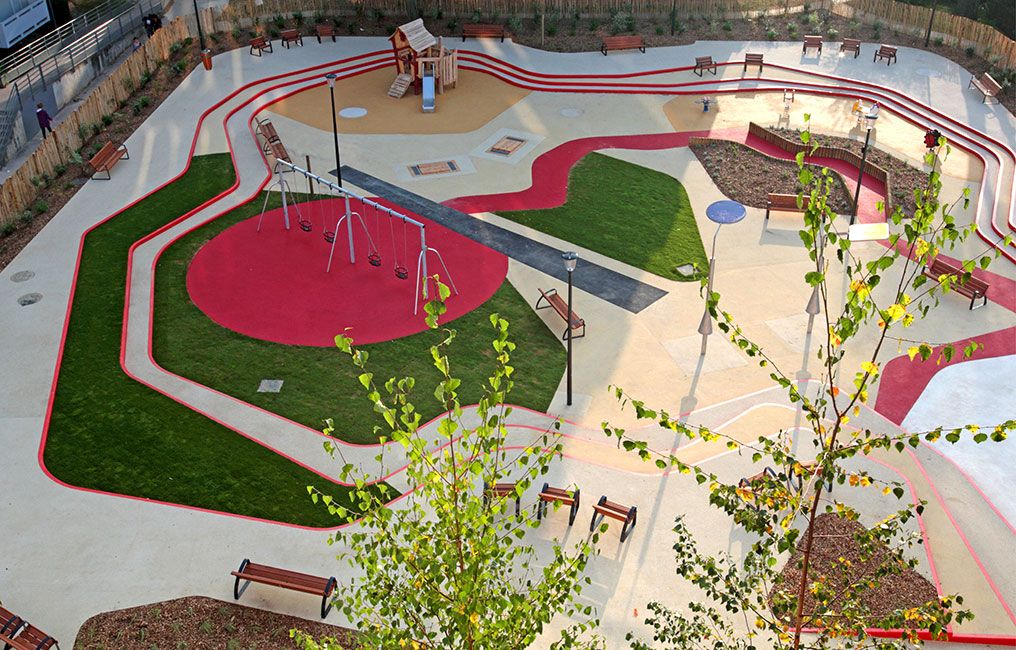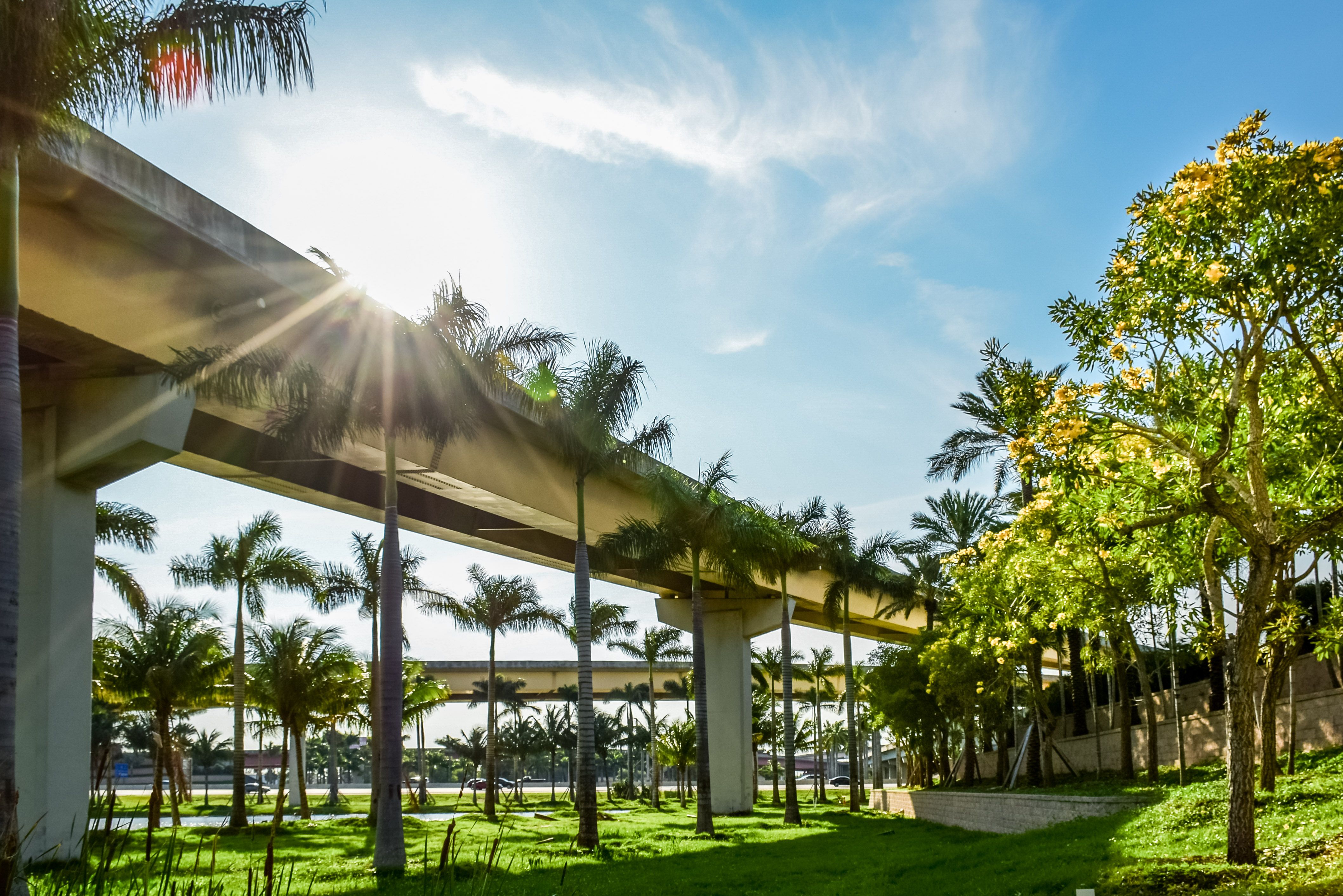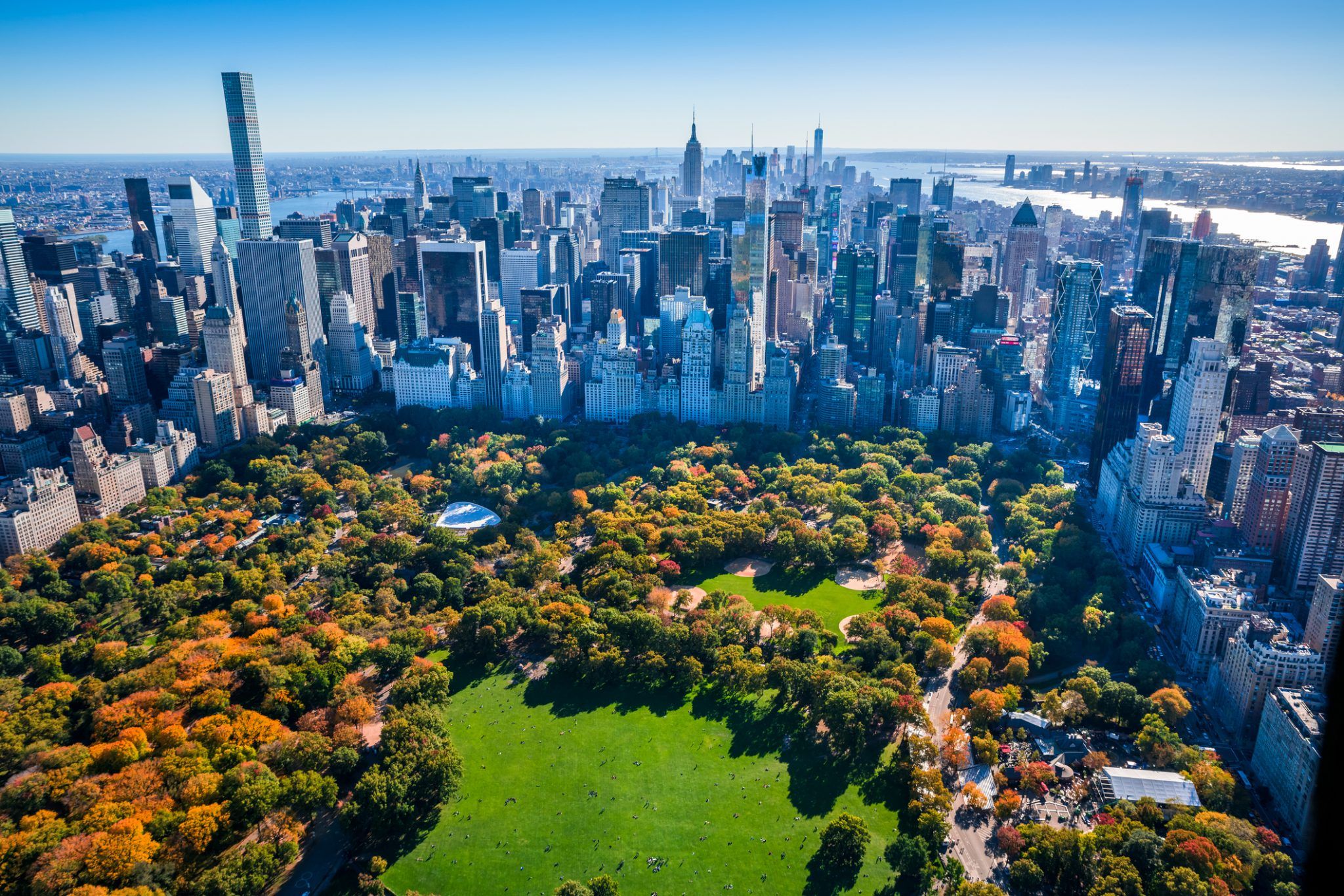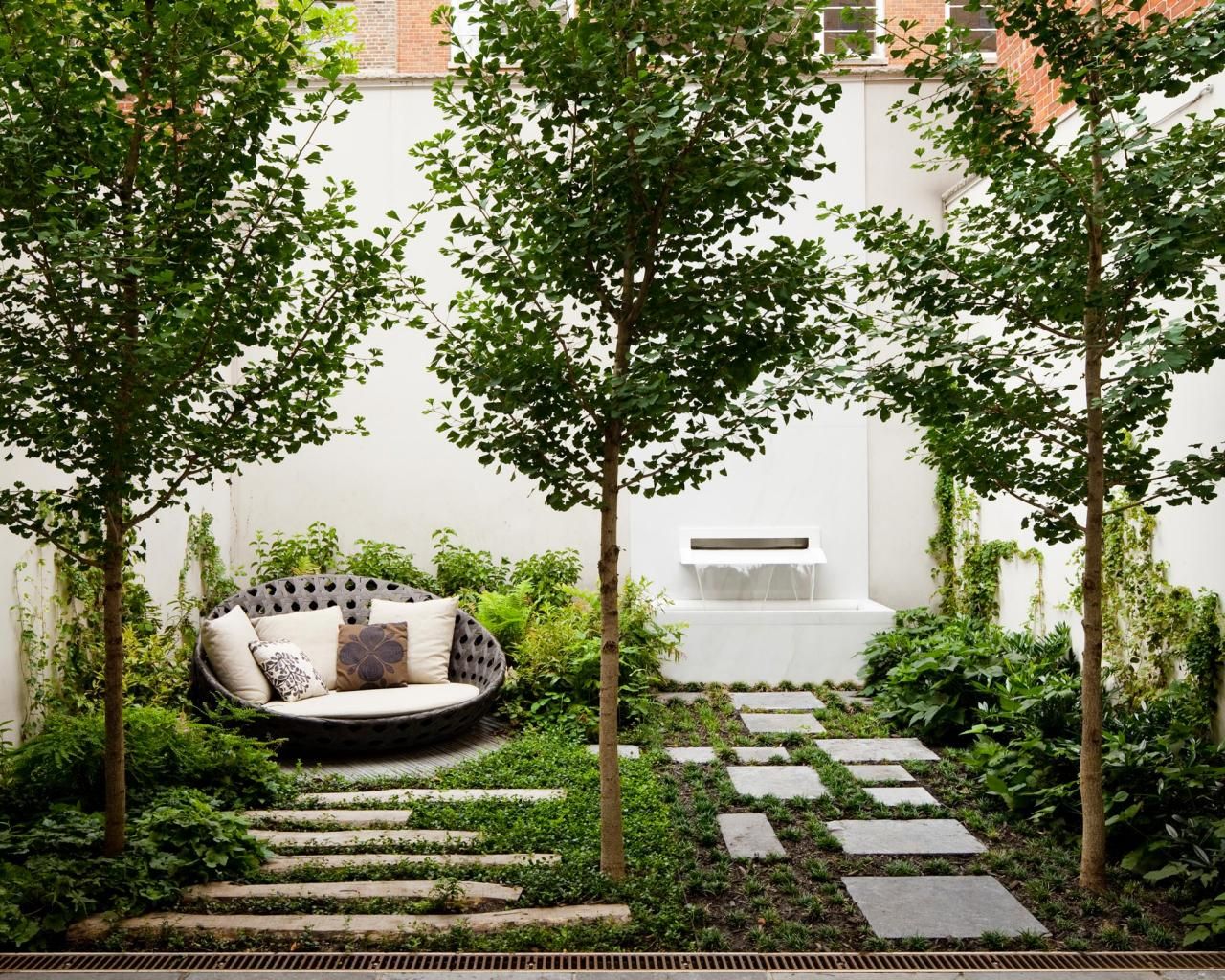Landscape architecture: Just try to think of iconic places like New York City’s Central Park and the Franklin Delano Roosevelt Memorial in Washington, D.C. Also, consider your downtown square, your local park, or even your own backyard.
Read more:
1. 5 Creative Applications of Lighting in Landscape Architecture
2. Tadao Ando’s Landscape Architecture Addition to Buddhist Cemetery in Japan
3. 20+ Landscape Architecture Free Books and Presentation Tutorials
What is landscape design architecture?
It is the design of almost anything around you and under the sky. Green roofs, urban forms, corporate campuses – they all define landscape architecture.
Generally, landscape architecture covers a huge spectrum, perhaps best understood by the profession’s mantra: as achieving a balance between the built and natural environments. It requires a multidisciplinary approach involving environmental science, art, ecology, and much more. We have got you covered with resources; here are more than 20 Landscape Architecture Free Books and Tutorials. Sometimes landscape design leads to extraordinary results such as restoring endangered wetlands, securing government and other buildings, and removing toxins from rainwater. These are not pie in the sky. They are what landscape architects are designing right now.
Landscape architecture is a formal process of study, design, and construction by which new landscapes are created to meet the aspirations of the people concerned. It involves framing proper planning projects, more particularly those affected by changes and the badly damaged areas, like example suburbs, peri-urban, industrial and coastal areas. The purpose of such planning projects to radically re-shape the damaged landscapes.
Landscape Architecture and Landscape Architects
Landscape architecture is a discipline that focuses on intervention through the activities of planning, design, and management. Also, it is concerned with the art and science that underpins all activities. All these activities are united in the concept of landscape, which is defined in various ways. However, it is generally understood to mean the outdoor environments and relationships between people and places. Landscape architecture is concerned with landscapes of all types both urban and rural, and at all scales from the smallest open space to the whole region.
As a result, people enjoy attractively designed gardens, public parks, playgrounds, residential areas, college campuses, shopping centers, golf courses, and parkways. Landscape architects design these areas so that they are not only functional but also beautiful and harmonious with the natural environment. They plan the location of buildings, roads, and walkways, as well as the arrangement of flowers, shrubs, and trees.
Some landscape architects work on a variety of types of projects. Others specialize in a particular area, such as street and highway beautification, waterfront improvement projects, parks, and so on. Others work in regional and resource management, feasibility, environmental impact, and cost studies or site construction. Increasingly, landscape architects work in environmental remediation such as preservation and restoration of wetlands or abatement of stormwater runoff in new developments. Historic landscape preservation and restoration is another area where landscape architects increasingly play a role.
Famous Landscape Architects: Frederick Law Olmsted
Frederick Law Olmsted (1822-1903) is popularly considered to be the father of landscape architecture. He defined this profession as: “What artist so noble …… as he who, with the far-reaching conception of beauty, in designing power, sketches the outlines, writes the colors and directs the shadows of a picture so great that Nature shall be employed upon it for generations before the work he arranged for her shall realize his intentions”.
Olmsted designed some of the most famous landscapes in his country. Central Park in New York City, America’s first great urban park was his first and perhaps most recognized project. The design at Central Park, done in collaboration with Calvert Vaux, has many elements of English landscape design. Olmsted formulated these elements during his visits in 1850 to Paxton’s Birkenhead in Liverpool, England, and among other gardens. His park is characterized by sweeping vistas and scenery.
This and other parks, he later developed, also were influenced by his view of society. As a writer on social issues, he believed parks should give the poor “an education to refinement and taste and the mental and moral capital of gentlemen”. Olmsted believed that common green spaces must always be accessible to all citizens.
His urban parks, including Central Park, integrated the city and landscape by taking the radical step of routing traffic through the park, not away from it. This was done without disruption of a landscape by physically separating roads either by sinking them out of the site or by hiding them behind landforms. In addition, his parks were influenced by his views on conservation. For instance, rocks and outcroppings were left in Central Park to remind visitors of the original landscape and the city’s origin in the wilderness (Sommer, 2007).
Contemporary Landscape Architecture
The new concept of landscape architecture comprises the study of optimal connections between human civilization and the environment. It is the landscape of urban open spaces that are considered ideal fields for such experiments of everyday life. At the same time, there is an awareness that exists is always pointing out that space is transformed, improved, and changed by man as a cultural being. In the meantime, the environment can never be fully controlled, and that the natural world has its authentic values and mechanisms that can never be controlled or tamed (Galecic, Unknown).
Role of Landscape Architects
It is observed that landscape architects create the landscape around us. They plan, design, and manage open spaces including both natural and built environments. They work to provide innovative and aesthetically pleasing environments for people to enjoy. Their work covers diverse projects that range from designing the layout of parks, gardens, and housing estates to city-center design, sporting sites, and improving the land. This means that the role of landscape architects is not just beautification, but it is about creating the space itself, creating the ambiance of development, and creating the quality of the built environment.
References
- Galactic, Nevenka. (Unknown). “Contemporary Trends in design and Use of Open Urban Spaces in Landscape Architecture and Horticulture”. M.Sc. Dissertation. The University of Belgrade. Serbia.
- Gazvoda, Davorin. (2002). “Characteristics of modern landscape architecture and its education”. Landscape and Urban Planning. Vol.60. pp.117-133.
- WhatISLA. N.p.: ASLA, n.d. Web. 9 Dec. 2015. <http://www.asla.org/yourpath/docs/WhatISLA.pdf>.
- IRS, comp. “Architects and Landscape Architects Audit Technique Guide.” (n.d.): n. pag. Aug. 2011. Web. 9 Dec. 2015. <https://www.irs.gov/pub/irs-utl/architects_atg.pdf>.
- Sommer, Melanie. (2007). “Frederick Lw Olmsted: The father of landscape architecture”. MPRNews official website: http://www.mprnews.org/story/2007/01/19/olmstedprofile
- The Quality Assurance Agency for Higher Education. (2007). “Landscape Architecture”. Linney Direct. Mansfield.


